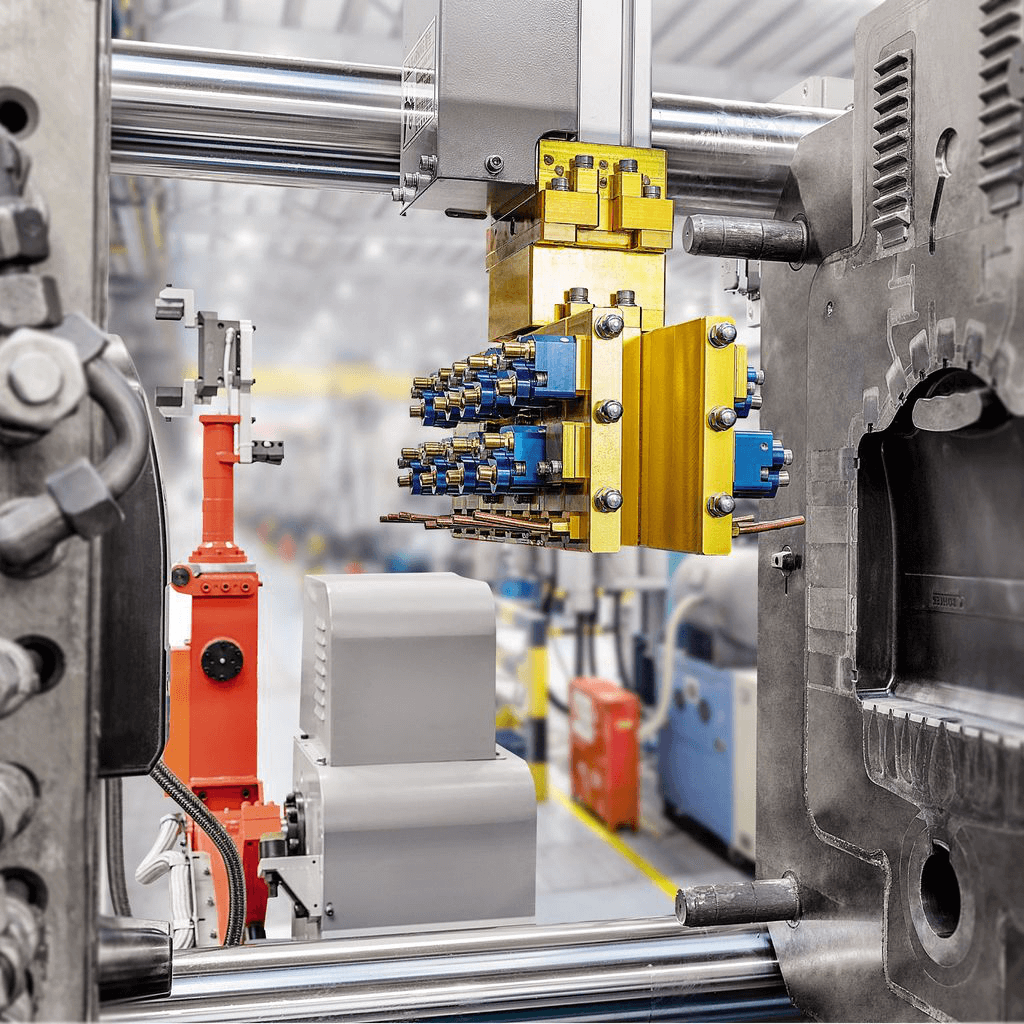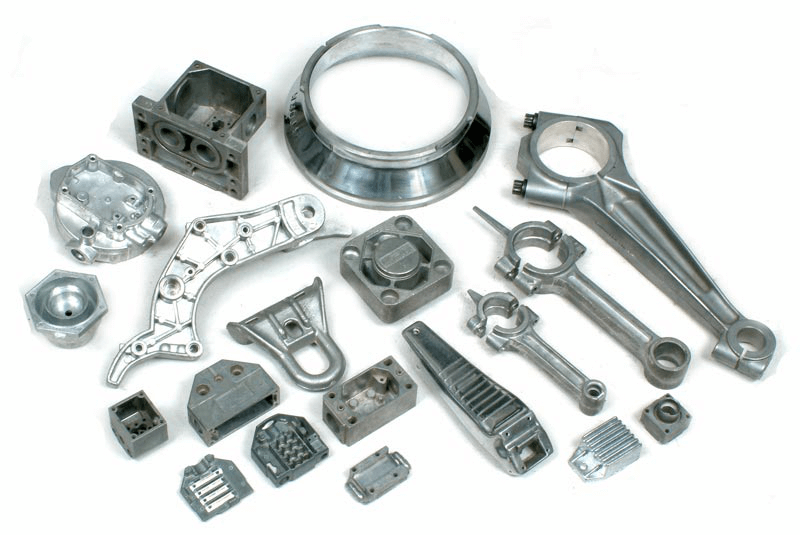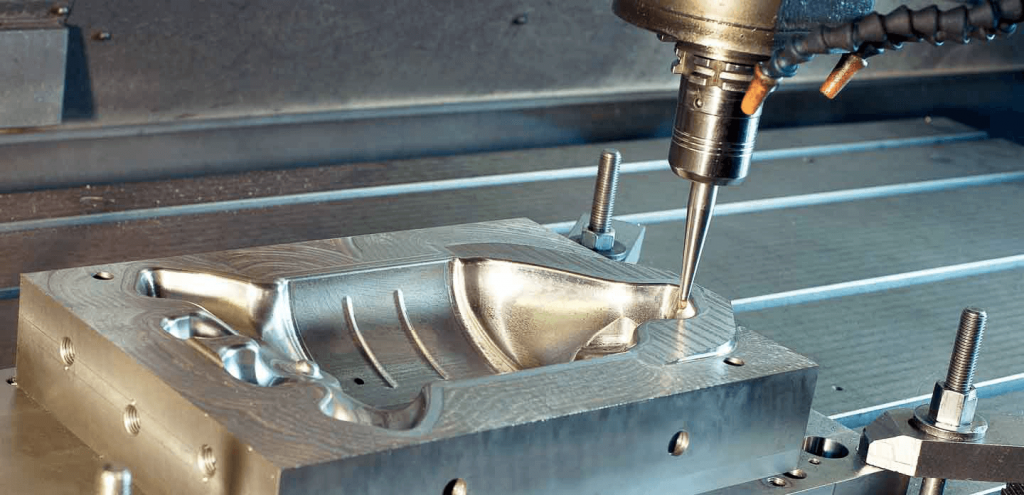6 Major Aluminum Die Casting Manufacturer Types (Sept. 2020)
Step by step guide to understand die casting process: Die cast aluminum

Aluminum die casting manufacturer Introduction
The low melting point of aluminum die casting manufacturer allows the use of a permanent mold, made of steel, to make foundry parts.
In die casting, an injection piston pushes the liquid aluminum into the mold cavity and then compresses the part during solidification. Typically, liquid metal reaches attack speeds of up to 60 meters per second. And the pressure applied can reach up to 800 bar during solidification.
To contain the pressure exerted on the part, the mold press keeps the mold closed by a closing force. It depends on the size of the indentation and the pressure applied by the piston. The smallest presses have a capacity of 1000 kN and the larger ones 35000 kN (3500 T). The force of the press is therefore directly related to the projected surface of the molded part.
The aluminum die casting manufacturer process is divided into 6 phases:
- liquid metal transfer
- injection approach phase
- rapid injection
- intensification
- ejection and
- mold lubrication.
Each phase is optimized to maximize the production rate and minimize the number of rejected parts.
There are three variants of aluminum die casting manufacturer process:
- aluminum die casting manufacturer
- Vacuum die casting including vacuum casting for structural applications
- Semi solid die-casting, much less common.
Biggest advantage of aluminum die casting
The main advantage of the aluminum die casting manufacturer process is the rapid rate. It makes it possible to lower production costs and to approach mass markets such as the automobile.
The rapid cooling provided by the metal mold produces a very fine metallurgical structure on the surface called a skin. It contributes to obtaining good mechanical properties.
The surface finish and dimensional tolerances are excellent. On the other hand, the design freedom is practically limited to the opening axis of the mold as for the parts. The process requires little labor, but a cost of immobilization and tools Student. For a large run of over 10,000 parts, the aluminum die casting manufacturer process offers the lowest production cost per part among foundry processes.
How does aluminum die casting manufacturer work?
Very good part quality is obtained by using a vacuum in the cavity to reduce the presence of trapped air, and by controlling the molding cycle in real time. The high vacuum pressure process (<50 mbar) combined with the development of primary alloys (of first fusion) with a low iron content.

It allows to obtain a maximum elongation at break and makes the heat treatment possible for the parts dedicated to structural applications. These developments are motivated by the weight reduction of land vehicles.
And vacuum die casting provides the ideal solution of a high-speed casting process for structural parts cast in aluminum. The development of this process and of dedicated alloys is currently the most active in the field of foundry.
Elements of a mold and production cell
The aluminum die casting manufacturer process is divided into two principles of supplying the liquid metal:
- hot room technology and
- cold room technology.
The hot chamber process uses a piston directly in the bath of molten metal to feed the mold. Similarly, the cold chamber process uses a “cold” container. In this, the liquid metal is transferred by ladle or by a dosing robot. required to fill the room. Since steel is dissolved by aluminum, the production of die-cast aluminum parts is only done in a cold room.
2.1 Description of aluminum die casting manufacturer
In most cases, the pressure mold consists of two metallic shells made of a ferrous alloy. Depending on the number of pieces provided, the materials used for the manufacture of the shells are:
- H13 type tool steel for indentations
- Type 4140 alloy steel or P20 tool steel for the support parts
Ejector rods are always made with a harder material. And in some cases, they are surface treated to limit sticking of the aluminum.

The aluminum die casting manufacturer composed the mold with a fixed part on the side of the liquid metal supply and a movable part on the other. The fixed part contains the metal entry hole and part of the coin cavity.
It can also have cores (fixed or drawer) to mold cavities in the part. The mobile part contains the ejection rods used for demoulding in addition to the cores and the part impression. The molds are equipped with oil (heated) or water-cooling channels. They also serve to preheat the mold initially in the case of hot oil.
How to reduce tooling cost of die casting mold?
To reduce tooling costs of aluminum die casting manufacturer, the cavity often consists of a main insert placed in a larger. It is a kind of permanent frame that can produce more than one type of part. The inserts or molds typically belong to the customer.
The process is well suited for thin walls down to 1.5mm. It is preferable to use uniform sections which solidify simultaneously.
There are no weights and the attacks on the parts are small to facilitate cutting on deburring presses after casting. The design of the parts makes extensive use of the ribs to increase rigidity and mechanical strength.
It also helps fill the cavity quickly before the alloy solidifies and to vent gases. The turbulence of the metal in the cavity is controlled by:
- the speed of metal injection
- the size and positioning of the feed channels and attacks
- the shape of the cavity (mainly ribs),
- and the use of wash heels
These are used to balance the movement of the metal and to capture the inclusions formed during filling. In the case of vacuum, the vacuum application parameters are also important for filling.
Die casting mold Tooling design
Aluminum die casting manufacturer is responsible for the design of the mold which includes the following features:
- Added foundry shrinkage, as liquid aluminum contracts upon solidification and in solid-state. Therefore contraction of the liquid before solidification is usually compensated for by the intensifying pressure.
- Added draft angles that allow the part to be ejected.
- Design of the feed system calculated to fill the footprint with the minimum of turbulence before the start of solidification.
- The Design of the ejection system.
- Design of drawer cores for complex cavities.
The modeling of the filling and the solidification is widely used for the design of the die-cast molds due to the high costs of modification of the tools.
Aluminum die casting manufacturer markets
In summary, the aluminum die casting manufacturer process offers the following characteristics:
- Minimum price for large series
- Excellent dimensional tolerances and surface finish
- Minimum machining required after molding
- Parts with limited design freedom in 2 axes
- Wide choice of alloys possible
The traditional die-casting market is focused on production parts. The small hardware industry, fasteners, housings, auto parts are major applicants.



